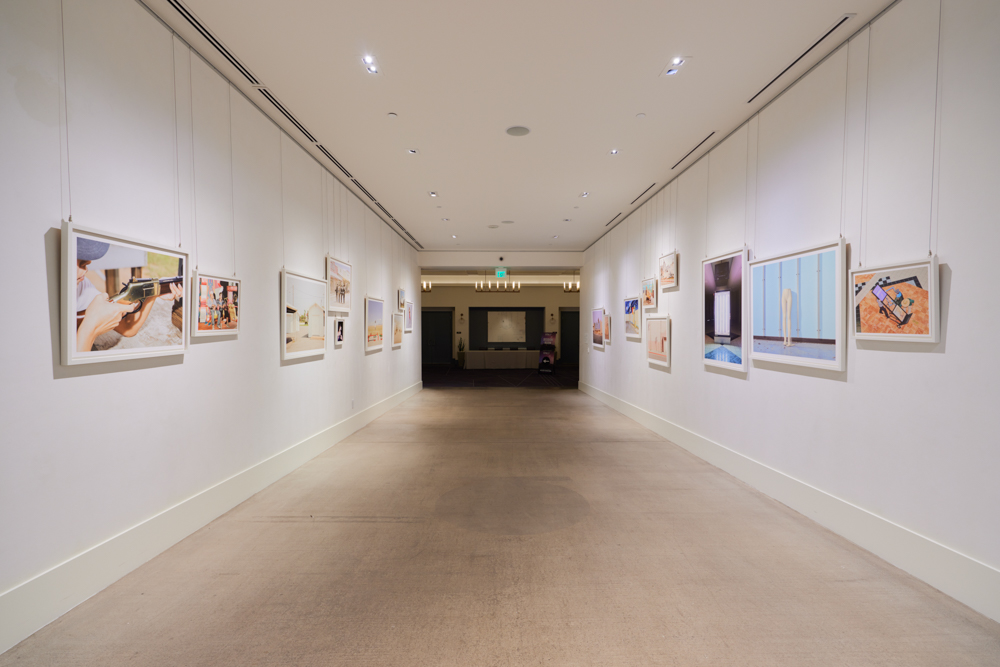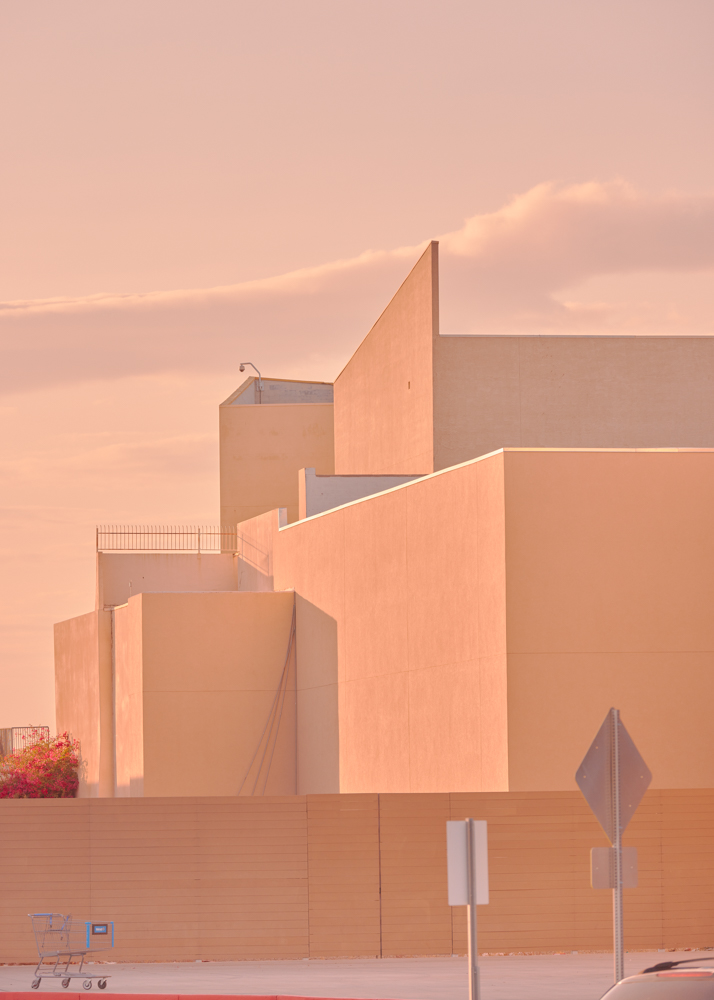Jesse Rieser: Souvenirs from Paradise
For his exhibition titled Souvenirs From Paradise, Jesse intertwines divergent narratives from his works A Vanishing America Folklore and The Changing Landscape of American Retail in his search to find meaning in the meaningless.
I have always been a big fan of Jesse Rieser’s way of seeing. We’ve featured his humorous and quirky series focused on the holidays, Christmas in America Happy Birthday Jesus, numerous times and it always makes me laugh. He is a great observer of not only human behaviors but continues to look hard at what is disappearing in our cultural zeitgeist. Rieser recently opened the exhibition, Souvenirs from Paradise, at the The Gallery at Mountain Shadows in Paradise Valley, Arizona that is on view until January 6th, 2023. The exhibition features works from two of Rieser’s series, A Vanishing Folklore and The Changing Landscape of American Retail. A Vanishing Folklore is a portrait of America in its current state, one full of circumspect change and loss of a way of life. The Changing Landscape of American Retail examines the transitions away from physical stores to our reliance on e-commerce. Together, the exhibition intertwines quintessential Americanness, using dazzling images with undertones of fear, a focus on artificial qualities, and the aftermath of a breakdown of the American Dream. Reiser is able to show the American vernacular with its inherent nuances. Reiser’s subjects bring the viewer in and his expert use of color and composition keeps us immersed.
Jesse Reiser was born in the Ozarks — an 80s kid with a Midwestern upbringing in Springfield, Missouri. At Arizona State University he majored in photography and art history while attending the Herberger Institute of Art and Design. His world has been shaped by his artistic parents: a mother who is a painter and educator and a father who draws and paints; they exposed him to the colorful pop art movement of the 50s, American photo realism of the 70s; and the use of light to celebrate the subjects in the Dutch Baroque, and Renaissance periods — all major influences in his aesthetic.
For the past decade Jesse has carefully constructed a photographic world built on the foundation of celebrating the mundane and humorous elements that often go overlooked in our day-to-day American experience. His use of light and bleached color, leaves the viewer with the illusion that our existence is equally beautiful as it is fleeting. In this world you will find one-time paradisal places and memories framed by our modern anxieties about the past, present, and future — examining our rituals and the artifacts left behind.
Jesse and his work has been featured by The New York Times, NPR, Wired, National Geographic, The Washington Post and celebrated by Photolucida’s Critical Mass Top 50 (3x) Communication Arts, PDN, American Photography Annual, an Art Director’s Club Young Gun, Magenta Foundation’s Flash Forward, and Klompching Gallery’s Fresh 2020 exhibiting artist.
Rieser’s works have been exhibited internationally, a frequent guest University lecturer, and a three-time judge and panelist for the One Club & Art Director’s club Young Gun’s program- identifying the top 30 creatives under 30 working around the world.
He is represented by Anderson Hopkins in New York, NY.
A Vanishing Folklore
2012 – 2022
This long-term works in progress are the transmissions of a citizen who seems comfortable sitting with the knowledge that he is as excited by his home as he is alarmed by it. The photographs are as much about the American roadside as they are the infinitely flat and delusional digital landscape, a place where reverence is arbitrarily distributed between the meaningful and meaningless components of our world, both existing and extinct.
If the earlier work of Christmas in America: Happy Birthday, Jesus is a thematic and a visual exercise in American Maximalism, these images are deceptively nuanced photographs of—and for—an America that has done everything it can to abolish nuance, creating bleached-out stand-ins for the place itself.
It’s hard to ignore the current collective fear of losing one’s version of America—their way of life, the fear that it too is fleeting. It’s as if their concept of America is un-shareable. You will find images of implied loss, or as if something is missing or been plucked out of the frame. Erased.
The Changing Landscape of American Retail
2015 – 2022
Like memories, familiar retail entities are fading away. Today, they stand as modern-day ruins and architectural artifacts that reach into the not-so-distant past of our own maturing interests and evolving identities.
Toys “R” Us brings back of memories of avoiding my brother’s aerial assaults of red dodge balls and Nerf guns. The Battlefield Mall was once a central meeting spot for my junior high peers—anchored by the food court and Aladdin’s Castle arcade. The arcade elicits a sensory transaction when I’m greeted by the flashing lights of Street Fighter II, manic electronic beeps, purple geometric carpet, and the oddly unique odor of stale popcorn mixed with the metallic scent of quarters, tucked into my front pocket. During high school and college, I spent hours at Best Buy and Circuit City listening stations, previewing new music releases from my favorite artists.
By 2012, Circuit City closed their doors. Toys “R” Us folded in the spring of 2018, and Best Buy continues to shutter underperforming stores. Additionally, arcades and food courts are endangered as “Class B” malls are closing all over the U.S.
Store closings feel like a continuation of our declining thoughtful conversations, empty playgrounds, and sense of community as we opt for a digital facsimile. We are no longer previewing music and getting recommendations on new releases in person and in retail shops. We will no longer meet our friends in food courts.
The Changing Landscape of American Retail is an exercise of looking to the past and peering into the future, serving as a metaphor of how technology is accelerating cultural change in the modern world. I know you can’t fight change, but that doesn’t mean you can’t be sentimental.
These works have been profiled by Wired, NPR, The New York Times, Architectural Digest, Fast Company, and The Washington Post.
Posts on Lenscratch may not be reproduced without the permission of the Lenscratch staff and the photographer.
Recommended
-
Kevin Cooley: In The Gardens of EatonJanuary 8th, 2026
-
William Karl Valentine: The Eaton FireJanuary 7th, 2026
-
Sean Stanley: Ashes of SummerJanuary 6th, 2026
-
Nathan Bolton in Conversation with Douglas BreaultJanuary 3rd, 2026
-
Andrew Lichtenstein: This Short Life: Photojournalism as Resistance and ConcernDecember 21st, 2025











































































